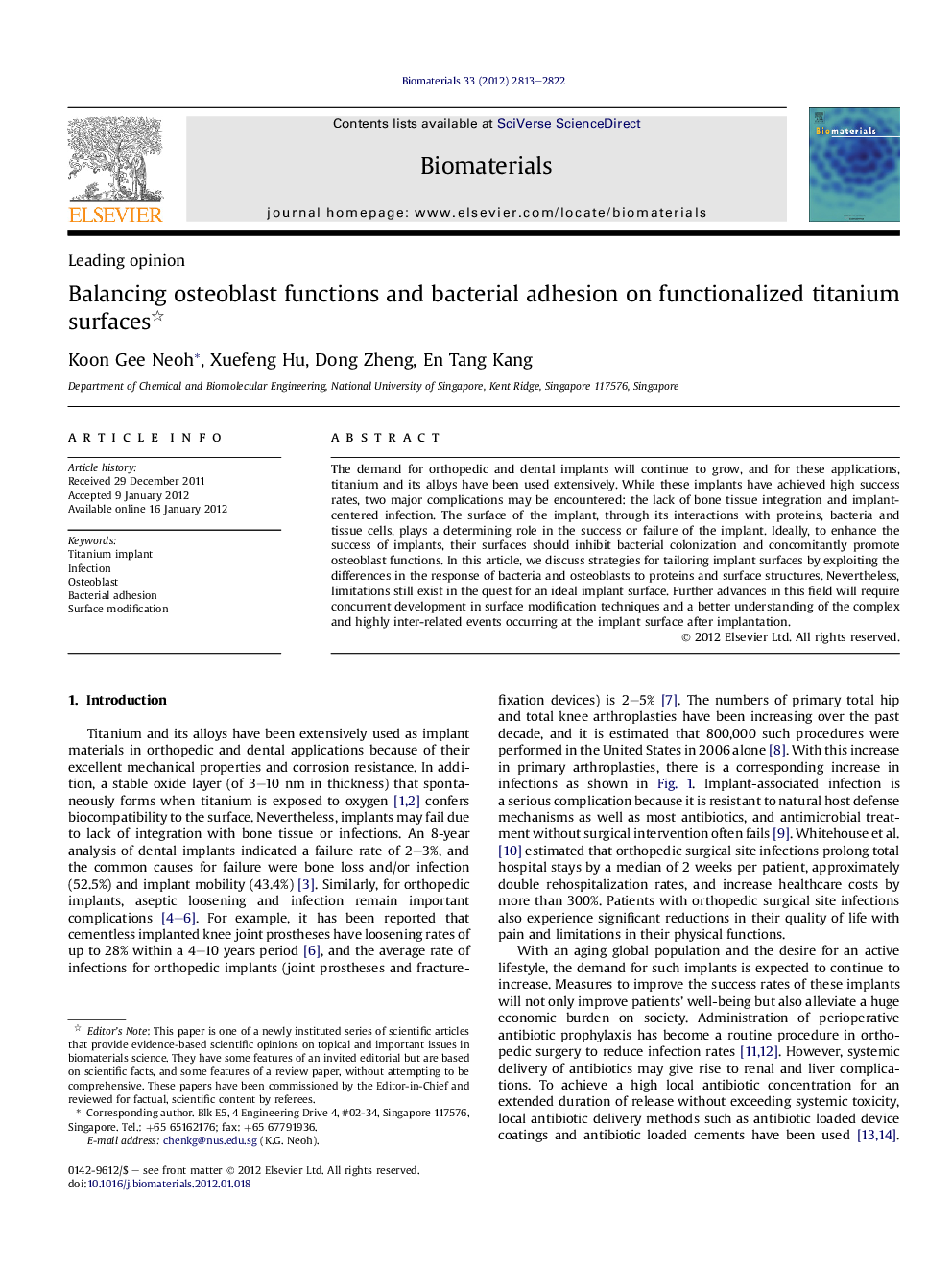| Article ID | Journal | Published Year | Pages | File Type |
|---|---|---|---|---|
| 7311 | Biomaterials | 2012 | 10 Pages |
The demand for orthopedic and dental implants will continue to grow, and for these applications, titanium and its alloys have been used extensively. While these implants have achieved high success rates, two major complications may be encountered: the lack of bone tissue integration and implant-centered infection. The surface of the implant, through its interactions with proteins, bacteria and tissue cells, plays a determining role in the success or failure of the implant. Ideally, to enhance the success of implants, their surfaces should inhibit bacterial colonization and concomitantly promote osteoblast functions. In this article, we discuss strategies for tailoring implant surfaces by exploiting the differences in the response of bacteria and osteoblasts to proteins and surface structures. Nevertheless, limitations still exist in the quest for an ideal implant surface. Further advances in this field will require concurrent development in surface modification techniques and a better understanding of the complex and highly inter-related events occurring at the implant surface after implantation.
